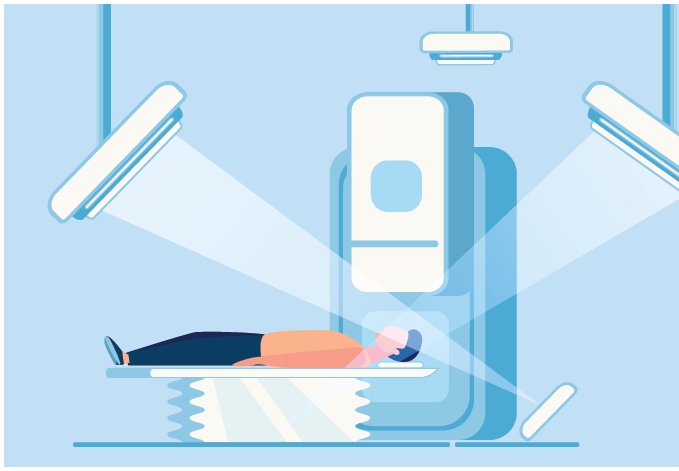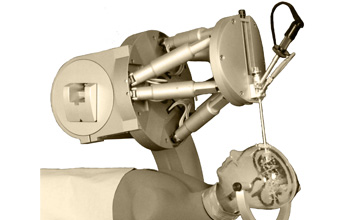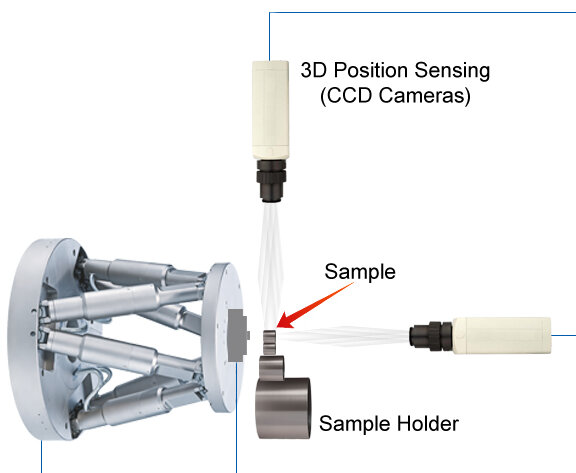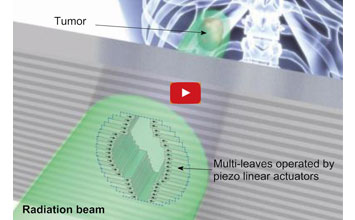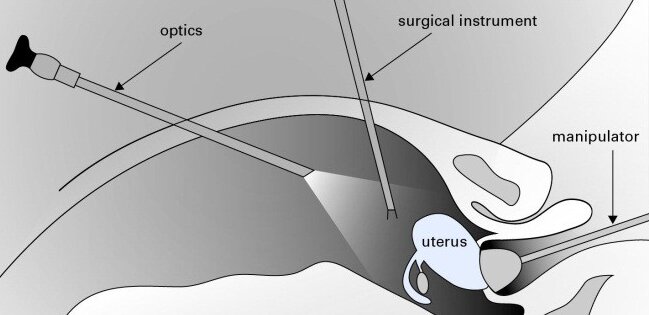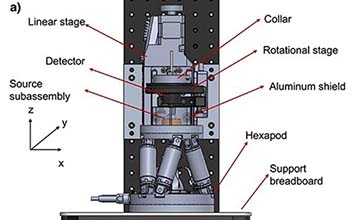Radiation therapy is becoming a more mainstream way to treat tumors, not only because advances have made it more cost efficient and less intrusive than the classical treatments of surgery and chemotherapy but also because it performs better for many types of tumors.
External beam radiotherapy is mainly applied to tumors located in the head, breast, lung, and prostate. Since the goal is to destroy the tumor cells without harming the healthy tissue around it, positioning the patient precisely relative to the beam is crucial. Based on the average size of human cells, a positioning resolution up to 0.03mm is recommended.
Most current installations are IGRT systems (Image Guided Radiotherapy), using one or several methods to determine the topical patient’s and tumor’s position before and during radiation treatment.
These methods include:
- X-ray scans
- Optical body surface profiling
- Thermal imaging (adding a further dimension to monitor the patient’s position)
- Magnetic resonance imaging (MRI)
The aim of these methods is a patient-friendly, frameless stereotactic radiosurgery (SRS), e.g. of brain tumors.
In LINAC based devices, the patient is precisely positioned in relation to the 3D recorded data and radiation source by superimposing previously taken images. A multi-degree of freedom (DOF) operating table (patient couch) plays a key role in the precision of the entire process. Before the radiation treatment can start, the couch needs to move and orient the patient into the correct position in space.
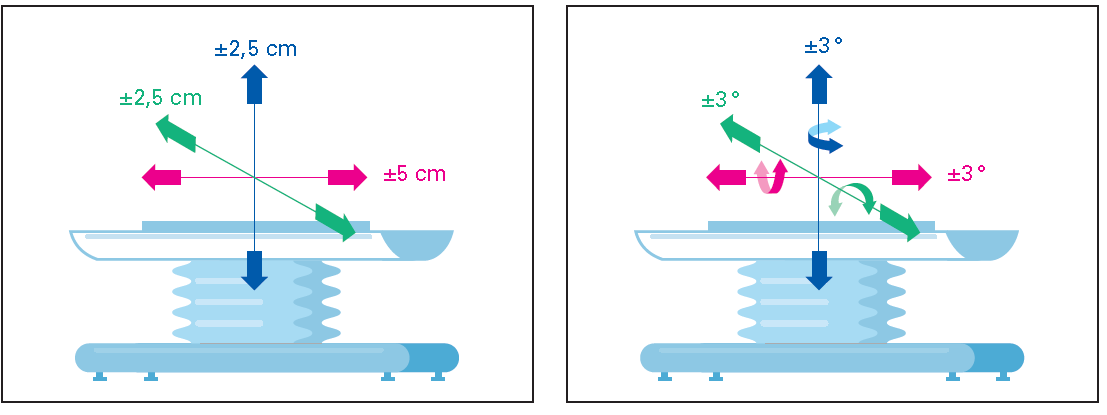
It is also possible to dynamically adjust the 6-axis couch during the radiation treatment, to counteract unwanted motion. Very high precision and high load capacity of >400lb are required. These requirements, along with freely programmable motion in 6 degrees of freedom, are achieved by PI hexapod 6-axis parallel kinematic positioning systems.
Hexapods (derived from Greek for 6 legs) are motion platforms controlled by six actuators (struts). They all act together on one platform and enable movements in six degrees of freedom.

Video: 7-Axis motion system consisting of a custom PI Hexapod and PRS200 Rotary stage in a setup with 3D-printed phantoms imaged repeatedly with a cone-beam computer tomography scanner. More information on this research from Johns Hopkins University is available here: https://aiai.jhu.edu/research/#phantom and here: https://jhu.pure.elsevier.com/en/publications/assessment-of-boundary-discrimination-performance-in-a-printed-ph
PI has 3 decades of experience in the design and manufacture of various types of hexapod mechanisms and controllers along with hexapod specific software, including specific designs for patient positioning couches (see drawing below). In addition to almost 100 standard models, a large variety of custom models have been designed, reflecting customer needs with respect to positioning resolution (nanometer to sub-millimeter), speed, dynamics, size, shape, payload (from a few ounces to several tons), and cost.
Hexapods provide many advantages, such as higher stiffness and accuracy, combined with lower mass, and a more compact design compared to conventional ways of creating 6-axis motion systems and are perfectly suited to positioning patients for radiotherapy.
Recent Research at the UK’s Kings College has suggested a robotic system for vitreoretinal surgery based on two H-825 hexapod 6-axis parallel robots.
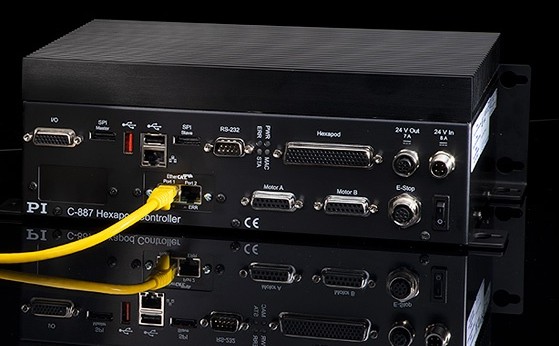
Of course, we can also provide positioning systems with plain linear or rotary motion, or any combinations thereof. Our engineers are ready to solve individual customer requests in radiotherapy. Talk to PI!
Blog Categories
- Aero-Space
- Air Bearing Stages, Components, Systems
- Astronomy
- Automation, Nano-Automation
- Beamline Instrumentation
- Bio-Medical
- Hexapods
- Imaging & Microscopy
- Laser Machining, Processing
- Linear Actuators
- Linear Motor, Positioning System
- Metrology
- Microscopy
- Motorized Precision Positioners
- Multi-Axis Motion
- Nanopositioning
- Photonics
- Piezo Actuators, Motors
- Piezo Mechanics
- Piezo Transducers / Sensors
- Precision Machining
- Semicon
- Software Tools
- UHV Positioning Stage
- Voice Coil Linear Actuator
- X-Ray Spectroscopy


